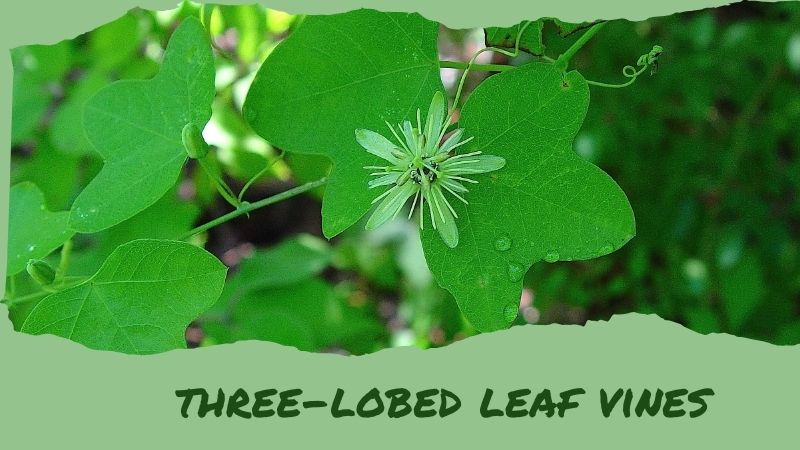PLANT TREE
Exploring Three-Lobed Leaf Vines: Varieties and Care Tips
Three-lobed leaf vines are fascinating plants that can add a touch of elegance and greenery to gardens and landscapes. These vines, characterized by their distinctive three-lobed leaves, offer both aesthetic appeal and functional uses, such as providing shade or covering unsightly structures. In this article, Floral Garden Ideas explores some popular varieties of three-lobed leaf vines and offers tips for their care.
Popular Varieties of Three-Lobed Leaf Vines
Virginia Creeper (Parthenocissus quinquefolia)
Virginia Creeper is a fast-growing deciduous vine known for its vibrant fall colors. Though its leaves typically have five lobes, young plants often start with three lobes, making it relevant to our discussion.
- Appearance: The vine can reach up to 50 feet, with leaves turning brilliant red in the fall.
- Habitat: It thrives in full sun to partial shade and adapts well to a variety of soil types.
- Uses: Ideal for covering fences, walls, and trellises.
Boston Ivy (Parthenocissus tricuspidata)
Boston Ivy is another vigorous climber, often confused with Virginia Creeper. It is particularly notable for its ability to adhere to surfaces with small adhesive discs.
- Appearance: The leaves are glossy green, turning red or purple in autumn. Each leaf is distinctly three-lobed.
- Habitat: It prefers full sun to partial shade and well-drained soil.
- Uses: Commonly used to cover buildings and walls, giving a classic ivy-covered look.
Grape Ivy (Cissus rhombifolia)
Grape Ivy is a less aggressive vine, often grown indoors as a houseplant or outdoors in shaded areas.
- Appearance: It features three-lobed, dark green leaves with a glossy texture.
- Habitat: Prefers indirect light or partial shade and thrives in well-drained soil.
- Uses: Suitable for hanging baskets, indoor pots, or as ground cover in shaded gardens.
Care Tips for Three-Lobed Leaf Vines
Planting and Soil Preparation
- Soil: Most three-lobed leaf vines are adaptable but generally prefer well-drained soil. Adding compost or organic matter can enhance soil fertility and drainage.
- Location: Choose a planting site based on the specific light requirements of the vine. While some varieties prefer full sun, others thrive in partial shade.
Watering and Fertilizing
- Watering: Consistent moisture is crucial for young vines. Water regularly during the first year to encourage robust root development. Mature vines generally require less frequent watering.
- Fertilizing: Nourish your plant with a balanced, slow-release fertilizer in the spring to encourage healthy growth. Too much fertilizer can promote excessive foliage at the expense of flowers or fruit.
Pruning and Training
- Pruning: Regular pruning is essential for managing your vine’s size and shape. Prune in late winter or early spring, just before new growth begins to appear. Remove any dead or damaged wood, and thin out crowded areas to improve air circulation.
- Training: Use trellises, wires, or other supports to guide the growth of the vine. Training helps prevent damage to structures and ensures the vine covers the desired area.
Pest and Disease Management
- Pests: Common pests include aphids, spider mites, and caterpillars. Regularly inspect the vines and use appropriate treatments, such as insecticidal soap or neem oil, to manage infestations.
- Diseases: Watch for signs of fungal diseases like powdery mildew or leaf spot. Ensure good air circulation and avoid overhead watering to reduce the risk of fungal infections.
Winter Care
- Hardiness: Check the hardiness zone for your specific vine variety. While some, like Virginia Creeper, are hardy in colder climates, others may require protection during winter.
- Mulching: Apply a layer of mulch around the base of the vine in late fall to protect the roots from freezing temperatures.
Conclusion
Three-lobed leaf vines are versatile and attractive additions to any garden or landscape. By selecting the right variety and following proper care practices, you can enjoy their beauty and benefits year-round. Whether you choose the vibrant Virginia Creeper, the classic Boston Ivy, or the adaptable Grape Ivy, these vines will undoubtedly enhance your outdoor space with their lush foliage and unique charm. And don’t forget to follow Floral Garden Ideas for more great ideas.


